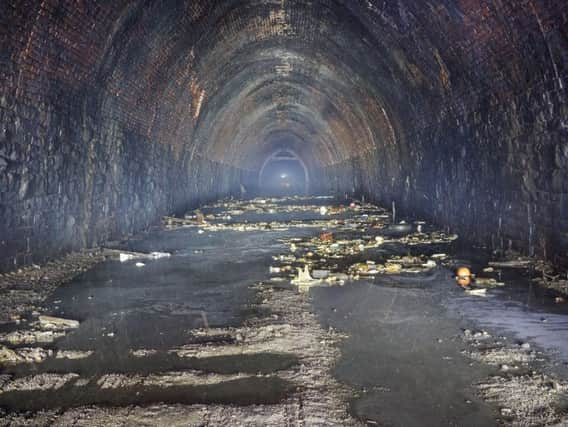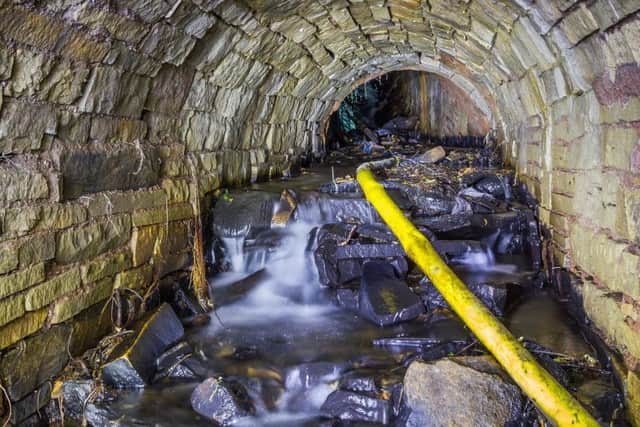Campaigners concerned over potential stream pollution from Queensbury Tunnel works


There is a campaign to reopen the 1.4-mile Queensbury Tunnel as part of a cycle network linking Bradford and Keighley to Halifax, but members claim that Highways England’s Historical Railways Estate, which manages the tunnel on behalf of owners the Department for Transport, wants to permanently close it “because of a perceived threat to public safety”.
Since September, the southern half of the tunnel has been “inundated” by “an estimated 6.6m gallons of water after a pumping station was switched off”, according to campaigners.
Advertisement
Hide AdAdvertisement
Hide AdThey said the equipment had been installed in 2016 to keep the Victorian structure de-watered, and the £50 annual rent for the land on which it is sited was not paid.


On January 4, contractor AMCO-Giffen started to pump water out at the Bradford end of the tunnel, discharging it via an old construction drain into Hole Bottom Beck, which feeds into a fish pond downstream, campaigners say.
Graeme Bickerdike, the Queensbury Tunnel Society’s engineering co-ordinator, said: “When the tunnel was last dewatered in 2015, the Environment Agency intervened to stop Highways England’s contractor pumping solids and heavily-silted water into Strines Beck at the Halifax end. Equipment had to be installed to filter it before entering the watercourse.
“The floodwater in the tunnel today is still contaminated and contains a considerable amount of rubbish – cans, tyres, plastics, polystyrene, old pallets.
Advertisement
Hide AdAdvertisement
Hide Ad“We’ve taken samples both upstream and downstream of the discharge point; at the moment, the discolouration appears relatively minor but that could change when AMCO-Giffen starts to undertake different work activities.”
The campaigners also claim to have been told by an Environment Agency source that the contractor does not have a permit in place for its operation – but the agency did not expressly confirm this in a comment to The Yorkshire Post, while Highways England says that the organisation and Bradford Council have not raised concerns regarding flood water.
A spokesperson for Highways England said: “Highways England was not involved in the forfeited lease for the pumping station at the southern portal. This matter was between the landowner and the owners of the tunnel.
“Our agents and contractors have been in contact with both the Environment Agency and Bradford Council regarding the pumping of flood water through the existing drainage system at the northern portal. Currently they have raised no concerns.”
Advertisement
Hide AdAdvertisement
Hide AdA spokesperson from the Environment Agency said: “The Environment Agency has been in contact with the relevant parties in regard to the Queensbury Tunnel. We are offering advice and guidance to ensure all environmental rules and regulations are adhered to. Our priority is to ensure no harm is done to the environment or wildlife in the surrounding area.”
A DfT spokesperson said: “Works at the Queensbury Tunnel are currently managed by Highways England.
"The Environment Agency have not raised any concerns with them.”
AMCO-Giffen said it could not comment.
Queensbury Tunnel was built by the Great Northern Railway between 1874 and 1878 as part of the Halifax, Thornton and Keighley Railway.